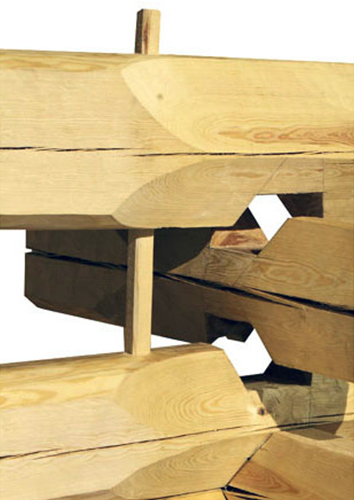
A mortise and tenon is used with all types of logs, and bolts are also used in newer log buildings. They can make the wall uniform so that it remains straight and does not bulge. Spruce logs tend to twist considerably as they dry, which is why larger mortises and tenons must be used with them.
The ends of the logs bordering openings are supported by T-battens. T-battens allow the log wall to descend and prevent the bulging of the wall. The T-battens can be fitted with non-descending components such as window and door frames. The T-battens can be door, window or fire battens.
A fire batten serves as a slide surface between a log wall and a brick wall. The purpose of mortise and tenon is to bind the courses of logs to each other and to prevent the lateral movement of the logs and the bending of the walls. The tenons are made from the same wood material as the wall logs or from a material felled at the same time as the logs. A tenon has a round cross-section and is 5 mm thinner at the centre than at the ends. Mortises and tenons must always be used near corners and openings. The recommended spacing in the same log course is 1,200 to 2,000 mm with pine and 80 to 1,300 mm with spruce.